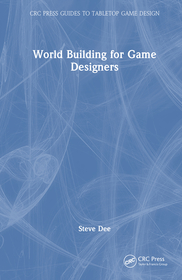
What Makes Civilization?
The Ancient Near East and the Future of the West
-
10% KEDVEZMÉNY?
- A kedvezmény csak az 'Értesítés a kedvenc témákról' hírlevelünk címzettjeinek rendeléseire érvényes.
- Kiadói listaár GBP 14.99
-
7 161 Ft (6 820 Ft + 5% áfa)
Az ár azért becsült, mert a rendelés pillanatában nem lehet pontosan tudni, hogy a beérkezéskor milyen lesz a forint árfolyama az adott termék eredeti devizájához képest. Ha a forint romlana, kissé többet, ha javulna, kissé kevesebbet kell majd fizetnie.
- Kedvezmény(ek) 10% (cc. 716 Ft off)
- Kedvezményes ár 6 445 Ft (6 138 Ft + 5% áfa)
Iratkozzon fel most és részesüljön kedvezőbb árainkból!
Feliratkozom
7 161 Ft

Beszerezhetőség
Bizonytalan a beszerezhetőség. Érdemes még egyszer keresni szerzővel és címmel. Ha nem talál másik, kapható kiadást, forduljon ügyfélszolgálatunkhoz!
Why don't you give exact delivery time?
A beszerzés időigényét az eddigi tapasztalatokra alapozva adjuk meg. Azért becsült, mert a terméket külföldről hozzuk be, így a kiadó kiszolgálásának pillanatnyi gyorsaságától is függ. A megadottnál gyorsabb és lassabb szállítás is elképzelhető, de mindent megteszünk, hogy Ön a lehető leghamarabb jusson hozzá a termékhez.
A termék adatai:
- Kiadó OUP Oxford
- Megjelenés dátuma 2010. július 22.
- ISBN 9780192805805
- Kötéstípus Keménykötés
- Terjedelem240 oldal
- Méret 204x139x22 mm
- Súly 351 g
- Nyelv angol
- Illusztrációk 20 black and white halftones, 6 maps 0
Kategóriák
Rövid leírás:
A vivid new account of the 'birth of civilization' in ancient Egypt and Mesopotamia where many of the foundations of modern life were laid
TöbbHosszú leírás:
In What Makes Civilization?, archaeologist David Wengrow provides a vivid new account of the 'birth of civilization' in ancient Egypt and Mesopotamia (today's Iraq). These two regions, where many foundations of modern life were laid, are usually treated in isolation. Now, they are brought together within a unified history of how people first created cities, kingdoms, and monumental temples to the gods.
But civilization, as Wengrow shows, is not only about such grand monuments. Just as importantly, it is also about the ordinary but fundamental practices of everyday life that we might take for granted, such as cooking food and keeping the house and body clean.Tracing the development of such practices, from prehistoric times to the age of the pyramids, the book reveals unsuspected connections between distant regions, and provides new insights into the workings of societies we have come to regard
as remote from our own. It also forces us to recognize that civilizations are not formed in isolation, but through the mixing and borrowing of culture between societies.
The book concludes by drawing telling parallels between the ancient Near East and more recent attempts at reshaping the world order to an ideal image. Are the sacrifices we now make in the name of 'our' civilization really so different from those once made on the altars of the gods?
Convincingly concludes that the parallel development of Mesopotamia and Egypt demonstrates the deep attachment of human societies to the concepts they live by, and the inequalities they are prepared to endure in order to preserve those guiding principles.
Tartalomjegyzék:
Chronological Chart
Preface and Acknowledgements
Introduction: a clash of civilizations?
Part One: The Cauldron of Civilization
Camouflaged Borrowings
On the Trail of Blue-Haired Gods
Neolithic Worlds
The (First) Global Village
Origin of Cities
From the Ganges to the Danube: the Bronze Age
Cosmology and Commerce
The Labours of Kingship
Part Two: Forgetting the Old Regime
Enlightenment from a Dark Source
Ruined Regimes: Egypt at the Revolution
Conclusion: what makes civilization?
Further Reading
Index


This Is Service Design Thinking: Basics - Tools - Cases
14 327 Ft
12 178 Ft










